Both KIA and the Burma’s government blame each other for beginning armed conflict.
The New Light of Myanmar, a state-run newspaper, claimed on 18 June that the skirmishes were started by KIA shooting. KIA vice-versa blames government’s forces. According to KIA’s spokesperson, the government army is sendin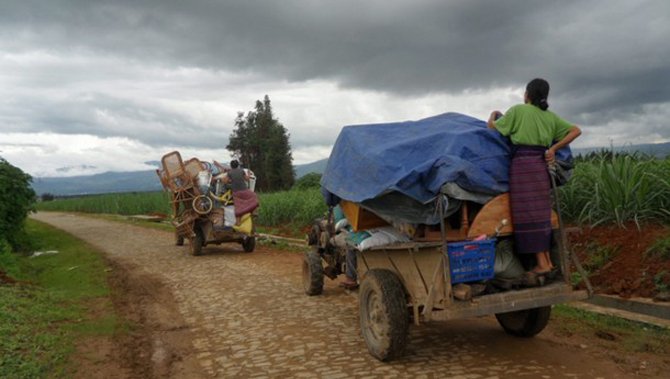 g reinforcements to the area; clashes continued through the weekend and show no signs of ending.
g reinforcements to the area; clashes continued through the weekend and show no signs of ending.
The National League for Democracy (NLD) told in their statement that there had been casualties, injuries and destruction due to the armed conflicts in Burma’s northernmost province, Kachin State.
The NLD said that about 10,000 local residents and Chinese workers constructing a hydropower dam in the conflict area had to flee across the border into China to escape the hostilities.
Government’s desire to control investments
Some observers say the renewed hostilities in Kachin State after a 17-year ceasefire between the Burmese army and KIA are largely due to the state’s desire to control the area close to the China-Burma border where an important hydropower dam project is in progress.
China’s energy company Datang (Yunnan) United Hydropower Developing Co (DUHD) has invested in the Taping dam project and had 215 Chinese workers stationed there until all returned to China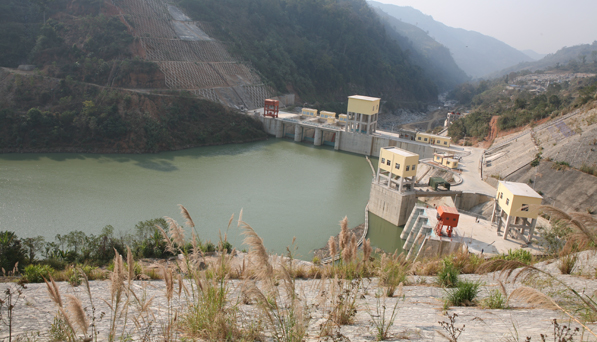 recently due to the conflict, according to Burma’s state-run New Light of Myanmar.
recently due to the conflict, according to Burma’s state-run New Light of Myanmar.
The development of Chinese mega-project investments have been introduced to the mountainous terrain of Kachin State with the backing of Burma’s government. These projects, which right groups say will extract an enormous social and environmental price from the region, have generated much animosity in KIA circles and among the Kachin public.
KIA officials said they were never consulted about these projects, but have instead experienced Burmese military encroachment into their area.
Unlike previous conflicts with Burmese troops, KIA officials have now got to consider the China factor. The latest military offensive has an objective of creating a safeguard for China’s dam projects in their region. But they have also called on Beijing to mediate in the conflict. In addition, the KIA continues to call for a genuine federal union.
2008 constitution – reason of new conflicts?
Related to the election last year the regime put strong pressure on armed ethnic groups to make them become part of border guard force, but most of them rejected.
KIA rejected government’s order to transform into a border guard 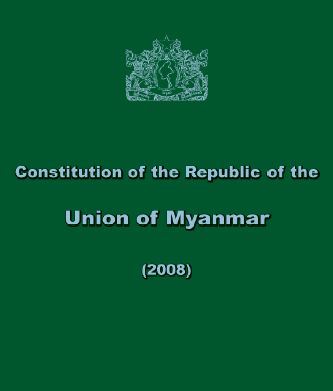 force under the central command of the Burmese army, afterwards a tension began building. Nerves finally snapped on June 9 when fierce fighting broke out between the KIA and Burmese government forces.
force under the central command of the Burmese army, afterwards a tension began building. Nerves finally snapped on June 9 when fierce fighting broke out between the KIA and Burmese government forces.
The NLD spokesperson said that Burma’s new government needs to change the 2008 Constitution, which was drawn up by Burma’s ex-military regime, if it really wants to terminate the conflicts.
Speaking to The Irrawaddy on 20 June, Ohn Kyaing said, “We already mentioned that what we want most is the peace. U Tin Oo and Daw Aung San Suu Kyi also mentioned that peace is the most important thing for the current situation. We are not pleased with the armed conflicts with the ethnic groups. There are so many problems in Burma which have to be solved by political means. We will keep calling for discussion and dialogue. We urge the countries which can help us to bring peace.”
Norway rethinking Burma policy
The Norwegian Burma Committee has earlier warned that the regime’s attempt to force ethnic groups to give up their independence would results in more conflicts.
Despite disappointing developments in Burma after last year elections, Norway seems to view positive sings in country’s political life because of a new parliament.
After a state secretary in Norway’s foreign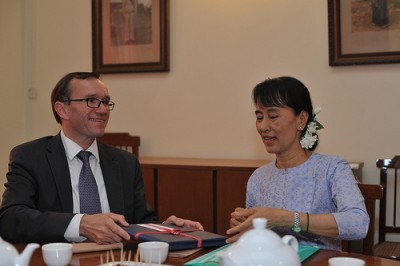 ministry Espen Barth Eide (right) visited Burma in May, as the first European government delegation after the election, he confirmed that Norway is re-thinking their Burma policies. Eide said there is a positive development in Burma, but still much lacking.
ministry Espen Barth Eide (right) visited Burma in May, as the first European government delegation after the election, he confirmed that Norway is re-thinking their Burma policies. Eide said there is a positive development in Burma, but still much lacking.
“Developments in Burma give reason to hope for a change for the better,” Eide said. He said that some of Burma’s opposition parties find it “meaningful” to be represented in the national assembly even though it remains dominated by the military junta that has ruled Burma for years.
“We can’t rule out that real change can occur when a parliament is formed, when the opposition is given more room to express itself and the military’s direct grip on power becomes smaller,” Eide said.
Norway risks as human rights situation worsens
– If Norway seeks bigger engagement in Burma it should also include the difficult issues. Norway should call on Burmese authorities to immediately impose a nationwide ceasefire and seek political solutions through dialogue, says Inger Lise Husøy, director for The Norwegian Burma Committee.
Ethnic groups in Burma want a peaceful solution, but the development the last couple of years demonstrates that the regime in Burma will carry out their demands by force. The result will be more war crimes and violations of human rights as well as a worsening humanitarian situation.
Background
Pressure against ethnic groups related to the election 7 November 2010 has resulted in several conflicts.
Fighting in the beginning of June in Kachin State was followed by 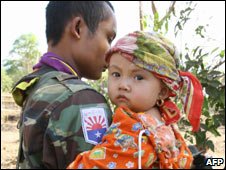 negotiations. According to KIA they wanted a peaceful solution, but after disagreement of placement of troops fights broke out again Thursday last week. KIA says they have lost patience with the regime and is now willing to fight. Chances for saving the ceasefire agreement are slim.
negotiations. According to KIA they wanted a peaceful solution, but after disagreement of placement of troops fights broke out again Thursday last week. KIA says they have lost patience with the regime and is now willing to fight. Chances for saving the ceasefire agreement are slim.
In March this year the Burmese Army attacked Shan State Army – North og broke a 22 years old ceasefire agreement. Around 3000 fled, while a population of 100 000 was living in the conflict zone. There have been reports on arbitrary executions, detention, torture, gang rapes, forced relocation and forced labour. The conflict is ongoing.
Already the day after the election there were fighting in Karen State between a break out fraction from Democratic Karen Buddhist Army (DKBA has agreed to be included in the border guard force) and the Burmese Army. More than 10 000 fled to Thailand.
In August 2009 a 20 years old ceasefire agreement between the regime and the Myanmar National Democratic Alliance Army of the Kokang group in Shan State was broken. More than 30 000 civilians fled to China.
Related articles:
Burma: Karen petition to UN calling to take action against junta’s violation of human rights
Karen Communities Worldwide call for action to stop attacks on civilians
Burma urged to end repression of ethnic minorities before elections
Stop Thailand from forcing refugees back to Burma!
The Union of Burma under pressure in the UN Human Rights Council


